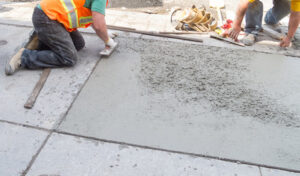Burial insurance, also known as final expense insurance, provides funds to help cover funeral expenses. It’s a type of whole life insurance policy that doesn’t require a medical exam and many A-rated companies offer it.
Work with an independent agent that can compare burial policies from multiple companies to find the best policy at the lowest cost. Avoid captive agents, which sell only their own company’s policies. Check out Burial Insurance With No Waiting Period near you.

Final Expenses
Burial insurance, also known as final expense or funeral insurance, sets aside funds to help your family pay for the cost of a funeral and burial or cremation services. It can also help cover other related expenses, like obituary notices, transportation, catering, flowers, and a headstone and burial plot. These costs can add up quickly and leave loved ones with a financial burden after your death. Burial insurance may be a more affordable option than purchasing a separate life insurance policy to cover the same expenses.
These policies can be found from a variety of providers and are typically whole life insurance plans that offer simplified issue, meaning they don’t require a medical exam or health history to qualify. Some plans allow you to lock in prices for your funeral home, casket or urn, and flowers. These types of plans also often come with a choice of payment options that can be paid monthly or annually.
A major difference between burial insurance and other forms of life insurance is that it’s specifically designed to cover end-of-life expenses, such as burial and funeral costs, which are one-time or short-term expenses. However, a death benefit from a burial insurance policy can be used by your beneficiaries to pay off other debts you have or for any other expenses they choose.
You can find a wide range of policies from different companies, and each plan has its own unique set of features. It’s important to shop around to compare prices, coverage amounts, and terms. In addition, be sure to check out the company’s financial strength rating to make sure it’s reliable. Then, you can determine which one will work best for your specific circumstances. Buying a burial insurance plan is much like shopping for a car; every policy will have its own fine print, but you can find a good fit with a little research. When you’re ready to start shopping, we recommend finding a local agent to assist you. They’ll be able to answer any questions you have about your burial insurance options and guide you through the process.
Funeral Expenses
Some people find themselves with a financial burden after the death of a loved one, and funeral expenses can add up quickly. Burial insurance (also known as final expense insurance) helps alleviate this problem by setting aside funds for burial costs.
It’s similar to whole life insurance and may be available without a medical exam, depending on the type of policy you select. A life insurance marketplace, reports that premiums for burial insurance start at $53 per month for 50-70-year-olds with coverage from $5,000 to $35,000. Another life insurance company notes that its rates range from $12 to $193 each month, depending on age, gender, health conditions, and the amount of coverage desired.
Burial insurance can be purchased in addition to other whole life insurance policies or as a stand-alone product. It is important to note that a life insurance company that sells burial insurance must have adequate capital and reserves to pay claims. It also must have a good track record, as measured by customer satisfaction. A consumer-driven research organization, analyzes complaints filed with state insurance departments to identify top-rated insurers for auto, home (including renters and condo), and life insurance policies.
There are also government organizations that work to provide relief for those facing funeral costs after a loved one’s death. For example, the Department of Veterans Affairs offers benefits to help defer the cost of a veteran’s funeral. It’s also possible for families to pay for a loved one’s funeral through a memorial fund or trust established by the deceased person.
Many funeral homes offer pre-need services that allow customers to purchase arrangements in advance to save money. This is a great option for those who know exactly what they want to have done to their remains and are ready to pay for the cost upfront. This can be more expensive than burial insurance, but it removes the stress of having family members foot the bill after a loved one’s passing and ensures that family members don’t have to choose between paying for the funeral or other essentials.
Medical Expenses
Many people assume that burial insurance covers funeral and memorial expenses, but it can also help pay medical bills or credit card debt. It may also cover transportation costs to scatter ashes or pay for a headstone. Burial insurance, which is also referred to as final expense insurance or funeral insurance, can offer a smaller death benefit than a traditional life whole policy, but it’s an affordable option that may help your beneficiaries avoid financial hardship.
Unlike pre-need arrangements, which are contracts with specific funeral homes that include the price of funeral services and products, burial insurance is generally a standalone product offered by insurance companies. It works similarly to traditional life insurance in that a premium is paid weekly or monthly, and a death benefit is paid upon the insured’s death. Burial policies are marketed differently, but the end result is the same-a beneficiary receives a lump sum to pay off debts or funeral and memorial expenses.
One of the biggest differences between funeral insurance and traditional life insurance is that burial insurance typically does not require a medical exam to qualify for coverage. This makes it a great option for individuals with pre-existing health conditions or who are concerned about being denied a policy due to certain risk factors.
Burial insurance is often sold through funeral homes, but it’s not uncommon to find independent agents selling these plans. While it’s a convenient way to buy burial insurance, we recommend that you shop your options before working with an agent. A captive agent can only sell burial policies from the company they work for, so it’s important to make sure you’re comparing prices before choosing a plan.
A company analyzed state insurance complaint data and ratings to identify the best burial insurance companies. Our ranking methodology included examining complaint ratios as well as underwriting experience, which includes evaluation of the insurer’s track record for paying claims and handling complaints. In addition, we considered the monetary value of the burial insurance policies offered and their premium costs.
Living Expenses
Burial insurance, also called final expense life insurance, is an affordable, easy-to-qualify for type of life insurance that pays a small death benefit to cover the cost of funeral and burial expenses after your passing. Unlike the more generous death benefits of term or universal life insurance, which you may have heard about, burial insurance plans are specifically designed to pay off a one-time cost that is usually incurred at the end of a person’s lifetime.
The NFDA estimates that the average funeral costs $7,848 and burial insurance can help you cover these expenses, leaving behind some money for other needs. In addition to easing the financial burden on loved ones, burial insurance can help you save on funeral expenses by paying for services at today’s prices.
What are the main differences between burial insurance and pre-need funeral insurance? Burial insurance, which is usually sold through a funeral home or other life insurance agent, is a type of whole life insurance that provides a small death benefit and requires a medical exam. Pre-need funeral insurance, on the other hand, is a plan that’s bundled with services through a funeral provider and can include specific products and services in exchange for a lump sum payout.
Both types of policies can be beneficial to your family, but it’s important to understand the difference between them before choosing which one is right for you. When considering burial insurance, be sure to choose a company with good customer service ratings and a low complaint ratio. A good place to start is with the company’s Burial Insurance Comparison Tool.
Its Burial Insurance Compare Tool analyzes over 30 different companies to provide you with a list of the best burial insurance policies. The results are based on a combination of factors, including price, health requirements, coverage amount and more. The best burial insurance policies typically have lower premiums and higher coverage amounts, but this varies by insurer. If you’re looking for the cheapest burial insurance, consider a simplified issue policy. This type of burial insurance allows you to qualify for a policy based on a short health questionnaire and an instant decision without requiring a medical exam.


